CORDOGAN'S SUMMARY OF ESTONIA PIANOS:
Click here for a complete product listing with clickable thumbnails!
Welcome to the wonderful world of Estonia pianos -- the "Golden Child" of the piano industry.
Estonia pianos are being praised by musicians worldwide as having a sound quality and action response competitive with any of the finest European makers, yet Estonia pianos remain a fraction the cost of Hamburg Steinways, Bosendorfers, Bechsteins, Bluthners and Faziolis. For a piano manufacturer to have cause for any sort of worldwide press is a rare occurrence, but that's what occurred back in 2004 when over 200 newspapers worldwide reported on Estonia's rapid rise to the very top of the piano world. There must have been something very special happening in this beautiful little country.
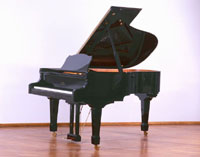 Estonia pianos in ChicagoEstonia pianos come from Estonia - a country located at the Baltic Sea, and 50 miles south of Finland. A European nation of only 1.5 million people, the country has its own language and cultural traditions. The Estonian language, described as a singing language, is part of the Finno-Ugric languages and is very close to Finnish.
Estonia pianos in ChicagoEstonia pianos come from Estonia - a country located at the Baltic Sea, and 50 miles south of Finland. A European nation of only 1.5 million people, the country has its own language and cultural traditions. The Estonian language, described as a singing language, is part of the Finno-Ugric languages and is very close to Finnish.
One of the most interesting musical events in Estonia is the Song and Dance Festival, where over 25,000 choristers sing together in a huge stadium directed by one conductor. The singing language and Estonia's love for music is relevant in connection with Estonia pianos, since it is at the factory where these elements are pursued further. As no other piano company, Estonia instruments carry its nation's name and are presented as its cultural ambassadors to the world.
City of Tallinn, where every Estonia piano is handcrafted.
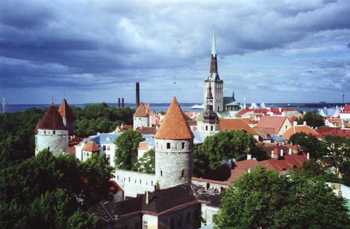 The Estonian culture has one of the richest piano building histories in the world, dating back more than 200 years - much longer than America boasts. Estonia Piano Factory also has the most unique product line and history in today's piano industry.
The Estonian culture has one of the richest piano building histories in the world, dating back more than 200 years - much longer than America boasts. Estonia Piano Factory also has the most unique product line and history in today's piano industry.
Most companies make vertical pianos and small grands to establish themselves, then build larger grands, ultimately earning the right to build a 9' concert grand model. Estonia ONLY made concert grands for the first 50 years of its existence, serving the concert pianists in the Baltic States, Finland, Russia, Japan, Germany, Ukraine, Belorussia, Armenia, and many other countries since World War II. In time, they made two smaller versions of it, then added two more sizes much later.
That's it -- no vertical models, no secondary line with a different grade of quality, no fancy case designs. Estonia also does not share their factory with other companies to produce pianos for other companies, which became a popular in the 2000's as companies around the world struggled to make ends meet. (That practice invariably dilutes the value of a brand name in the marketplace.)
Click here for "What's in a Name?"
Estonia pianos are available in five sizes 9', 7'4", 6'10", 6'3" and 5'6". All models are completely hand made and have Renner actions assembled at Renner in Germany. This is a distinct feature which carries a value of thousands of dollars over pianos which claim to have a "Renner action" -- assembled outside of Renner's German factory. They carry a factory warranty of ten years parts & labor -- twice that of pianos which are often compared to Estonia. Unlike other "premium" brands they do not source ANY of their components or materials from China – or anywhere outside Europe for that matter. It is a hand built European piano from top to bottom.
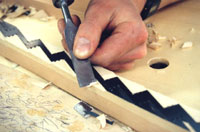 For those who recall Estonia's of the past, be assured these are vastly different from those made during the years under the Soviet Union's rule. Estonia country gained its independence in 1991 and began the drastic transformation to a top world-class competitor throughout the nineties and early 2000's.
For those who recall Estonia's of the past, be assured these are vastly different from those made during the years under the Soviet Union's rule. Estonia country gained its independence in 1991 and began the drastic transformation to a top world-class competitor throughout the nineties and early 2000's.
One of the most beautiful aspects of the Estonia Piano is how it emerged as a very improbable industry leader. In the months and years following Estonia's independence, companies throughout the country were being privatized and bought. Many Estonian companies were being bought by foreign corporations and the Estonian government feared that a foreign piano company may end up owning the Estonia Piano Company (Tallinn Piano Factory).
To prevent the disgrace of having their country's name emblazoned on pianos owned by a foreign company – or worse yet to see the company get dismantled for its parts, the Estonian government had a plan. The Tallinn Piano Factory was deemed a National Treasure in order to prevent being purchased (and possibly dismantled) by foreign conglomerates. The act secured that ownership must forever remain in Estonian hands. Shares were then distributed to the employees of the company, some of whom are 3rd, 4th and even 5th generation employees.
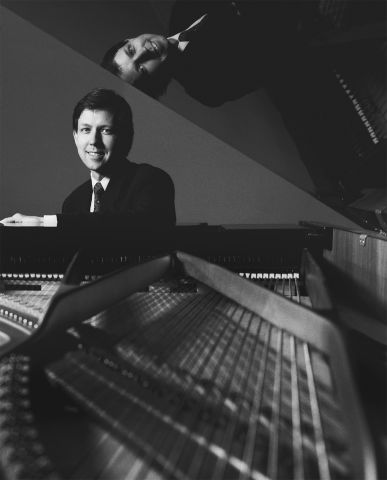 One such employee is Indrek Laul, who at the time was earning his doctorate degree at the famed Juilliard School in New York City, studying under Peter Serkin. A concertizing pianist, he used his income as a concert artist to slowly acquire a controlling interest in the company.
One such employee is Indrek Laul, who at the time was earning his doctorate degree at the famed Juilliard School in New York City, studying under Peter Serkin. A concertizing pianist, he used his income as a concert artist to slowly acquire a controlling interest in the company.
The new President of Estonia Piano Factory (and New York resident) is responsible for bringing these remarkable pianos to the United States. He is also responsible for the changes (over 300 documented changes since 2001) that have brought these pianos to a competitive level with all of the great treasured European brands, some of which are literally several times the price. Dr. Indrek Laul is so accomplished that the famed Juilliard School of Music in New York named him as one of the top 100 Juilliard graduates in the 100 year history of Juilliard.
These redesigned models are being DIRECTLY IMPORTED to the United States by Dr Laul himself so there is a tremendous value available to American consumers. Without having a U.S. distribution company where the giant overhead of a corporate headquarters...district sales managers...a national sales manager, US inventory warehousing...the savings is tens of thousands of dollars per piano when compared to the pianos of almost every other foreign piano company who relies on the traditional distribution method to pursue the North American market. The president and owner of the Laul-Estonia Piano Factory only has less than 200 pianos to sell each year. He can do so alone and pass an incredible savings on to 200 fortunate customers every year.
With this paltry but calculated production schedule (some manufacturers are capable of building 400 pianos in a DAY), the biggest problem our company faces with Estonia pianos is that they are extremely difficult to have on our sales floor. Cordogan's is only one dealer...in one state...of one country (read "frequent back orders"). Estonia has elected to concentrate primarily in major market areas -- Chicago, NY, LA, London, Toyko...to better serve markets that are important to any "boutique" type purchase.
In keeping with the marketing efforts of an artist, Dr. Laul has very little interest in making Estonia a household name. He would prefer that his instruments fall into the hands of aspiring pianists and not necessarily purchased as a trophy. The methods by which his pianos are marketed – or lack thereof, all but insure it. Estonia's efforts came to the U.S. market with no trace of an advertising budget or a public relations firm. The internet and the press in the U.S. carried the Estonia message.
Although most customers would recognize a "grass roots" rise to the top as that of a highly desirable cost-savings, Estonia's anonymity might be a bit unsettling to a layperson and/or non-player who may be compelled to buy a more familiar name. That is just fine with Estonia. Then again, established in 1893, Estonia pianos are hardly new, they're just relatively new to the U.S. An Estonia buyer is perfectly comfortable with the notion that these pianos are only known and cherished in musical circles. In fact, Estonia owners/enthusiasts have been referred to as "estoniacs". The day that it becomes as recognized as a certain piano that begins with an "S" and ends in "way", is also the day that Estonia will be priced like one.
If you are searching for that European, warm, rich and romantic sound, that German touch and/or the unique, investment-grade pianos, welcome to the world of Estonia pianos.
Click here for a interesting blog about the state of the European piano industry and Estonia's position within it
Click here for a 2004 Associated Press article about the meteoric rise of Estonia pianos
Click here for a 2003 Forbes article on Estonia pianos





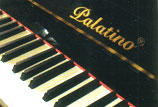


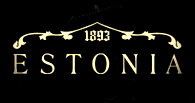

 Estonia pianos in ChicagoEstonia pianos come from Estonia - a country located at the Baltic Sea, and 50 miles south of Finland. A European nation of only 1.5 million people, the country has its own language and cultural traditions. The Estonian language, described as a singing language, is part of the Finno-Ugric languages and is very close to Finnish.
Estonia pianos in ChicagoEstonia pianos come from Estonia - a country located at the Baltic Sea, and 50 miles south of Finland. A European nation of only 1.5 million people, the country has its own language and cultural traditions. The Estonian language, described as a singing language, is part of the Finno-Ugric languages and is very close to Finnish. The Estonian culture has one of the richest piano building histories in the world, dating back more than 200 years - much longer than America boasts. Estonia Piano Factory also has the most unique product line and history in today's piano industry.
The Estonian culture has one of the richest piano building histories in the world, dating back more than 200 years - much longer than America boasts. Estonia Piano Factory also has the most unique product line and history in today's piano industry. For those who recall Estonia's of the past, be assured these are vastly different from those made during the years under the Soviet Union's rule. Estonia country gained its independence in 1991 and began the drastic transformation to a top world-class competitor throughout the nineties and early 2000's.
For those who recall Estonia's of the past, be assured these are vastly different from those made during the years under the Soviet Union's rule. Estonia country gained its independence in 1991 and began the drastic transformation to a top world-class competitor throughout the nineties and early 2000's. One such employee is Indrek Laul, who at the time was earning his doctorate degree at the famed Juilliard School in New York City, studying under Peter Serkin. A concertizing pianist, he used his income as a concert artist to slowly acquire a controlling interest in the company.
One such employee is Indrek Laul, who at the time was earning his doctorate degree at the famed Juilliard School in New York City, studying under Peter Serkin. A concertizing pianist, he used his income as a concert artist to slowly acquire a controlling interest in the company.
